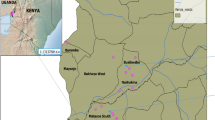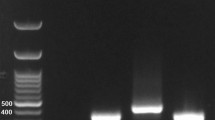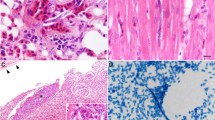Abstract
THE highest endemicity of filariasis in the Philippine Islands occurs in the extensive abaca-growing areas of the Bicol Peninsula, Samar, Leyte and Mindanao1. Here the principal vector is the plant-cavity breeding Aedes (Finlaya) poicilius (Theobald), which is able to exist in dense populations because the abundant rainfall keeps the leaf axils of the abaca trees filled with water1. In our survey of 1954–55 (ref. 2), we showed a general correlation between the presence of abaca and filarial endemicity, but there were two notable exceptions. One of these was in the northern mountain province of Luzon. Through the co-operation of the Malaria Eradication Unit stationed at Tabuk, we received a sample of night blood films which showed a 29 per cent microfilaræmia-rate.
This is a preview of subscription content, access via your institution
Access options
Subscribe to this journal
Receive 51 print issues and online access
$199.00 per year
only $3.90 per issue
Buy this article
- Purchase on SpringerLink
- Instant access to full article PDF
Prices may be subject to local taxes which are calculated during checkout
Similar content being viewed by others
References
Cabrera, B. D., and Tubangui, M., Acta Medico Philippina, 7, 221 (1951).
Rozeboom, L. E., and Cabrera, B. D., Amer. J. Hyg., 63, No. 2, 140 (1956).
Author information
Authors and Affiliations
Rights and permissions
About this article
Cite this article
ROZEBOOM, L., CABRERA, B. Transmission by Filariasis in the Philippine Islands by Anopheles minimus flavirostris Ludlow. Nature 200, 915 (1963). https://doi.org/10.1038/200915a0
Issue date:
DOI: https://doi.org/10.1038/200915a0
This article is cited by
-
Filariasis in Palawan, Philippine Islands
Nature (1964)



